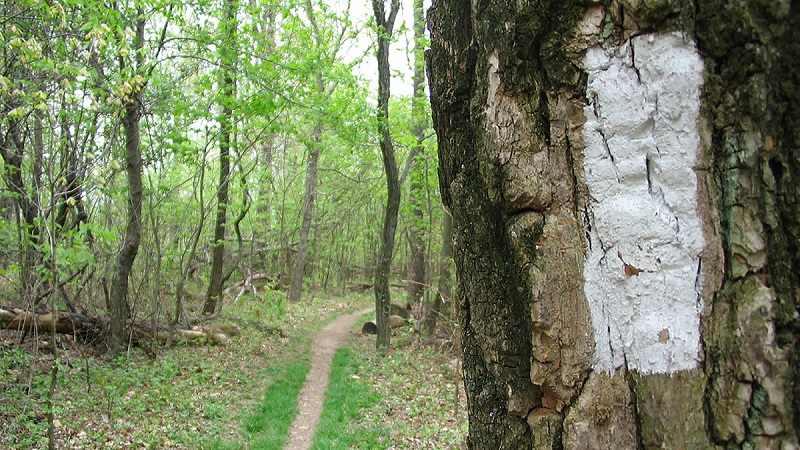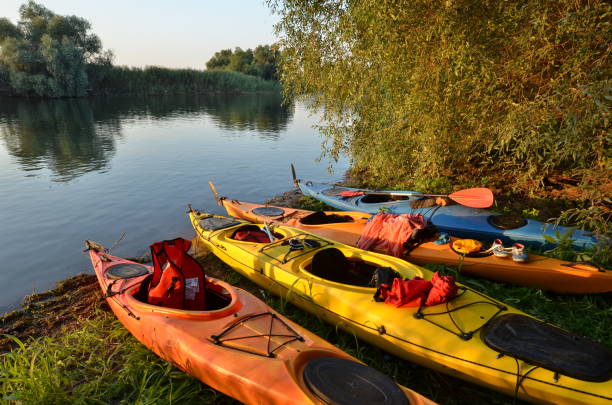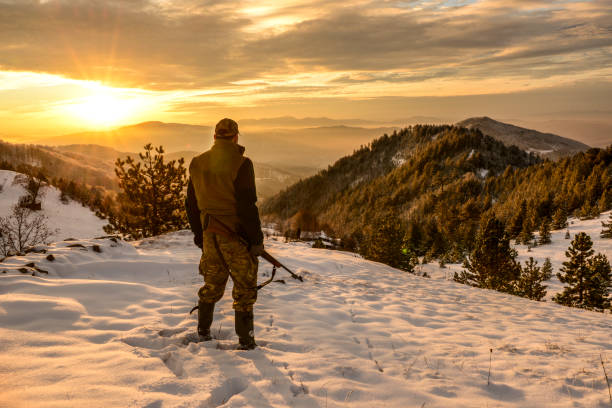Hiking is a passion that has taken me on countless adventures through picturesque landscapes and challenging terrains. During my journeys, I’ve realized the crucial role that hiking trail markers play in ensuring a safe and enjoyable experience.
They have guided me on the right path and sparked my curiosity about their history and significance. In this article, I will share my experiences with trail markers and delve into their importance and practicality.
Importance of Hiking Trail Markers
As a hiker, I have often found myself in the heart of dense forests, traversing rugged mountains and exploring winding trails. Losing one’s sense of direction in such vast wilderness areas is easy. Hiking trail markers have been my reliable companions during these excursions.
Seeing a brightly painted blaze on a tree or a neatly stacked cairn has relieved me, knowing I’m on the right track. These markers are not just painted symbols but beacons of safety and reassurance for hikers like me.
Types of Hiking Trail Markers
Throughout my hiking journeys, I’ve encountered a variety of trail markers. Early explorers’ traditional carved gravestones etched onto trees have always sparked my curiosity. Their historical significance and the stories they carry from past generations make the trails feel like living history.
On more modern courses, signage markers have provided valuable information about distances, trail names, and nearby points of interest.
I’ve learned to appreciate the diversity and evolution of trail markers, each serving its purpose uniquely.
How Trail Markers Improve Safety
Hiking in remote areas can be both exhilarating and daunting. When the path ahead becomes unclear, trail markers act as lifelines, guiding hikers away from potential hazards.
I remember one particular hike where the sudden fog obscured the way. Thanks to the trail markers, I could safely navigate to the trailhead without getting lost in the dense mist. These markers are not just symbols but guardians of our safety in the wilderness.
Trail Marker Maintenance and Conservation
During hiking, I’ve encountered well-maintained markers that have stood the test of time and faded ones needing repair. Local hiking clubs and organizations play a vital role in ensuring the longevity of trail markers.
I’ve participated in trail maintenance events, where volunteers come together to repaint faded blazes and clear overgrown paths.
This hands-on experience has given me a profound appreciation for the dedication and hard work required to preserve these valuable trail markers for future generations.
Best Practices for Following Trail Markers
Over the years, I’ve learned some essential best practices to make the most of trail markers. One important tip is to look for tags at eye level.
They are usually placed at a height easily visible to hikers passing by. I’ve also found it helpful to note the direction of the marker. Sometimes, the blaze may indicate a turn or change in law, helping me stay on the correct path.
I’ve navigated confidently through even the most challenging trails by visiting observant and attentive to the markers.
- Keep Your Eyes Peeled: Trail markers are strategically placed to catch hikers’ attention. Always look for these markers along the trail, especially at intersections and turns. They are often painted in contrasting colors or shapes to stand out from the surroundings.
- Look at Eye Level: Trail markers are typically placed at eye level for easy visibility. When walking the trail, look at your eye level to spot features easily. Avoid looking too high up or down; components are usually placed within a comfortable range for hikers to notice.
- Please take note of the Direction: Trail markers can give you valuable information about the direction of the trail. For example, a painted arrow pointing in a specific direction indicates the path to follow. Please remember that the marker’s tip will stay on the right route.
- Familiarize Yourself with Trail Markings: Before starting your hike, familiarize yourself with the specific trail markings used in the area. Different trail systems may have unique color codes or symbols to indicate varying trail difficulty levels or junctions.
- Use Landmarks as Reference Points: Use natural landmarks or distinctive features while following trail markers. This will help you track your progress and ensure you are on the right track.
- Trust the Trail Markers: Once you’ve spotted a trail marker, have confidence in its accuracy. These markers are carefully placed by trail maintenance teams and experienced hikers to guide you along the safest and most scenic paths.
- Be Cautious in Poor Weather: During foggy or rainy conditions, visibility may be reduced, making it more challenging to spot trail markers. Take extra precautions during such weather and consider carrying a compass or GPS device as a backup.
- Stay on the Trail: Always stay on the designated trail and avoid creating your shortcuts. Straying off the marked path can damage the environment and lead to potential hazards.
- Don’t Remove or Alter Markers: Respect the trail and other hikers by refraining from removing or altering trail markers. These markers are essential for the safety and enjoyment of all hikers.
- Leave No Trace: As you hike, leave no trace of your presence. Preserve the trail’s natural beauty for future hikers by not leaving trash or disturbing the surroundings.
Innovative Trail Marking Technologies
Technology has undoubtedly influenced the way we hike and interact with the outdoors. I’ve experimented with GPS-enabled trail markers and smartphone apps that provide real-time navigation assistance.
While these innovations offer convenience, I’ve also come to appreciate the simple pleasure of traditional features that blend harmoniously with nature.
It’s essential to balance embracing technological advancements and cherishing the timeless charm of conventional trail markers.
The Role of Hiking Clubs and Organizations
Hiking clubs and organizations have been integral to my hiking experiences. Their dedication to maintaining and improving trail markers ensures that hikers like me can explore nature responsibly.
Through workshops and events, I’ve had the opportunity to learn more about the history and significance of trail markers, deepening my connection with the trails I traverse.
Exploring Trail Markers Around the World
One of the joys of hiking is the opportunity to explore different landscapes and cultures. As I’ve traveled to various countries, I’ve encountered trail markers that reflect each region’s unique traditions and histories.
These markers are a testament to the global community of hikers who share a common love for the outdoors.
The Impact of Technology on Hiking Trails
While technology has brought new conveniences to hiking, I’ve learned not to rely solely on it. A fully charged smartphone can quickly become useless in remote areas with no signal or battery power.
Carrying a physical map and honing basic navigational skills are essential for a hiker’s preparedness.
Balancing Tradition and Innovation in Trail Markers
Embracing tradition and innovation ensures that hiking remains a dynamic and enriching experience.
Maintaining the authenticity of traditional trail markers while embracing technological advancements can enhance the hiking experience for hikers of all ages.
The Future of Hiking Trail Markers
As hiking gains popularity worldwide, the future of trail markers is exciting. I anticipate advancements in materials and sustainable trail-marking technologies that will continue to enhance the hiking experience.
The key will be striking a balance between preserving traditions and embracing innovation.
Conclusion
Hiking trail markers are more than just symbols on trees or rocks; they are our faithful companions in the wilderness, guiding us on our adventures. From painted blazes to carved signs, each marker carries its own story and significance.


